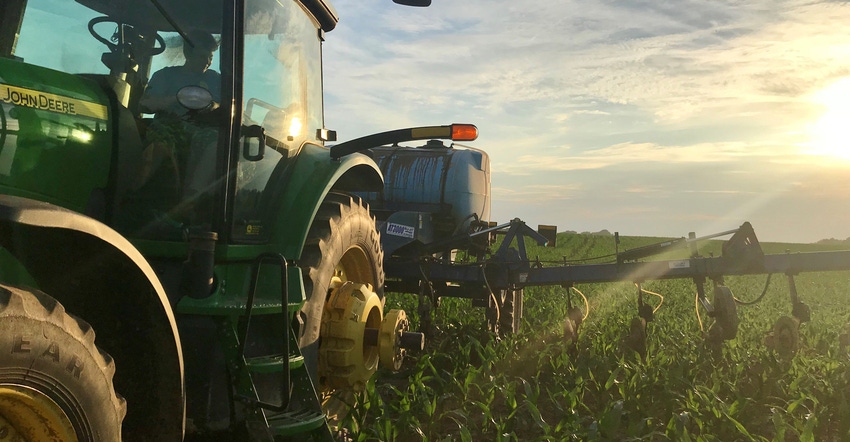June 13, 2019

We got three chances to plant corn on our farm this spring. The first two were parts of three days around April 23-25, and then another couple of days around May 16. Otherwise, it rained.
Then it cleared.
The third chance came on Sunday afternoon, June 2. The hammer dropped. We planted a lot and slept a little. My husband, John, planted 700 acres of corn between Sunday and Thursday. He started replant that Friday. Son Nathan, 14, learned to plant beans on Monday. In about three days, he planted 500 acres of soybeans. Then he sidedressed 350 acres of corn in two days. Two farm employees kept the sprayer, cultivator and seed flowing. Our two girls kept the cows alive.
I figured up from Monday to Thursday that week, John slept 14 hours. Total.
As a whole, Illinois farmers bumped their planted corn from 45% on June 3 to 73% on June 10. That’s historic. Others had both their first and last day of corn planting on the same day, as a storm came through and with it, federal crop insurance’s prevented plant date.
We all have questions about this growing season and how it’s going to turn out, but here’s what I know for sure: That first week of June is going to stand out in our collective memories for a long time.
Like the summer of 2012, or the harvest of 2009, or the flood of 1993, or the drought of 1988, “the first week of June 2019” will be one we remember for how hard we pushed, how relieved we felt, how little we slept. How much we gave up on.
But there’s something else I hope we remember, too: how hard we worked together.
At one point on Monday afternoon that week, I was working ground with the field cultivator. John was on the planter a couple of fields west, and from the hills, I could see him. He’d talked me through getting (almost) stuck twice. I hung up and called Nathan. He was planting beans, 10 miles west of us. We talked for a little bit and then he said, “Better go now, Mom. Gotta fill up with seed.”
I hung up the phone and felt a little teary.
Here we all were, working together to make a big, huge, important push for our farm. For our livelihood. Long days and sleepless nights and pushing to the next field and the next and the one after that was forging us together into a unit. Sometimes a grouchy, short-tempered unit, but a unit nonetheless. It was all hands on deck, from those of us in the fields to those of us flipping burgers on the grill and running sandwiches to the fields, to those of us keeping up with cattle chores.
I learned something else that week, which is that I remember when I only had my husband to worry about late at night. Now I get to add Nathan to that list. I’m not alone; my friend Erin Smith from Macomb, Ill., shared this text conversation with her teenage son, Riley, from that same first week in June:
Erin: “Are you going to be home soon? I’m worried about you!”
Riley: “I’m doing fine and I should be home by 1.”
Erin: “Okay, kid. I love you!”
Riley: “I love you, too, and I love this life God gave me.”
And that’s it, isn’t it? It’s a hard life but it’s a good one, even on a tractor late at night, planting seed that should’ve been in the ground a month ago. And it’s surely what generations before us have felt. A farm family, working together, making it happen. Talking through contingency plans if it doesn’t get planted (and it didn’t, for a lot of farm families).
When you share in the work and the worry, it makes you a community. And at the end of the day, that’s what agriculture’s really about.
Comments? Email [email protected].
You May Also Like




